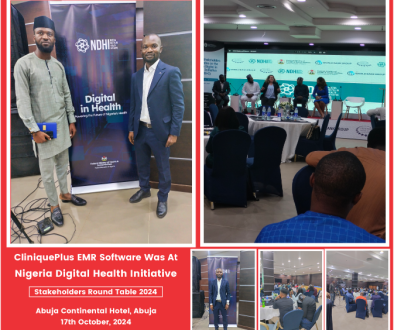8 reasons health care business fail in Nigeria you should avoid
Many health care businesses in Nigeria have failed or at the verge of failing. Knowing the most frequent mistakes is the first step to avoiding them. With that in mind, here are some of the most common problems we’ve seen that can cause a healthcare business to fail and some tips to solve them.
1. Staff Working Inefficiently
Is your medical organization still relying on an antiquated and paper-based system to manage your office and patient information? Your staff will definitely benefit by implementing Electronic EMR Records and Revenue Cycle Management, or RCM software.
You can use an EMR application to shave time on such basic processes as verifying a patient’s insurance status, for example, or to set up appointments more quickly and efficiently.
Staffers can easily type in the information in the patient’s chart a single time, and the details will be accessible to nurses, doctors, and other professionals whenever they need it. They can even use voice recognition to speak and see their words show up on the screen for fast digital storage with the patient’s chart.
These applications also save staffers time and effort because they reduce the number of mouse clicks and keystrokes needed to enter and update information.
2. Failure to properly articulate your value proposition
A value proposition is a statement that answers the ‘why’ a patient should use a clinic or hospital. It should convince a potential patient why your service will be of more value to them than similar offerings from your competition. You know why your company is great, but do your potential customers know what sets your brand apart? Too many companies in healthcare describe themselves as “better, faster, cheaper” than what’s already on the market, and their pitch ends there.
But that isn’t enough. How is your solution better? How much faster? How much cheaper than the standard of care? You must be prepared to communicate your unique value proposition from all angles, and you need to understand the health care economics for each stakeholder. Take the time early on to define the standard of care for each of your possible stakeholders and then quantitatively explain how your product improves upon it.
3. No clear cut income generation strategy.
Health care practice like every other business needs money to strive. A common mistake is thinking that because you are an expert in the field, patients will naturally come. This is a common and costly error that can significantly delay the time to success.
Far too many health care practices succeed in achieving a regulatory milestone but then run out of funding for every day to day clinic operation. To avoid this, practices should have a go-to marketing strategy and individuals should be saddled with that responsibility.
4. Choosing the wrong CEO or Owner Trying To Manage Everything.
The CEO is the face of a company, so it’s critically important to have the right person in this role. Investors know that startups need the right CEO at the right time. It’s OK to have a somewhat inexperienced founder as a CEO, as long as she or he has the general qualities that investors respect. Managing a medical practice in 2021 can seem even more challenging than brain surgery. If you try to keep track of every small administrative detail at your practice, you’d spend all day sorting through mounds of paperwork with no time to actually see patients. Just like triaging urgent care patients, practices need to triage administrative work in order to be effective. Too much triaging, however, could cause you to miss the warning signs of small financial issues that could ultimately grow into a major problem for your practice. It is advised to get an experienced manager to handle the administrative works while you handle the clinical aspect, though a close eye should be on this manager to avoid fund embezzlement.
5. Failing to track collections in relation to other practice metrics.
Amidst all the record-keeping, billing, and scheduling tasks performed by your staff every day, what are team members doing to keep track of unpaid claims? If you don’t stay on top of claims that providers have failed to respond to, you are more likely to lose out on the money you’re entitled to.
Medical software with a built-in feature for keeping track of claims will make a big difference in boosting your revenue. You’ll see when you should expect to receive each payment and the current status of each outstanding claim. This will let you spot problems before they persist for too long and can improve your cash flow.
Medical practices have many resources available to them to get on a better track with their finances. Once you and your staff take the time to transition from a paper-based system to install and implement EHR and RCM software, you can rest assured that you are doing what it takes to bring in more revenue. You’ll be better positioned to improve efficiency, reduce the number of claims denied by providers, and get better control over your overall unpaid claims.
6. Assuming expert skills will create a viable business.
In medical school, practice management classes typically focus on the delivery of care, rather than the structuring of a viable business model. When it comes to starting and running a practice, this lack of a strong business foundation can lead to some poor business decisions. For example, never assume that because you (or a fellow physician at your practice) are highly specialized that this discipline will naturally be an in-demand specialty and fuel practice growth. Whether you have a singular practice or a group practice, start by conducting a full business review to assess viability. Keep in mind that as larger hospital networks acquire more physicians, these physicians will, in turn, direct their patients to specialists within this network. If practice demand is not in line with the assumptions you made, now is the time to make adjustments.
7. Failing to spot billing irregularities or growing overhead expenses.
A subtle increase in overhead expenses or unnoticed billing irregularities can slowly compound from one month to the next without notice – until your end-of-year accounting summary reveals a major and unanticipated shortfall. Keep a close eye on hours worked charges and collections, and bottom-line budget numbers each month. If the end-of-month cash-on-hand is lower than expected, identify the cause. Is this due to a decrease in collections because a practice member took leave that month? Or is the decrease due to an unanticipated expense growth? You should have a monthly target. You can use it for benchmarking medical practice billing, tracking your practice’s financial vitals, and identifying potential problems early to avoid surprises at the end of the year.
8. Continued reliance on paper billing systems.
Are you still using paper billing? Relying on paper billing makes it harder and far more time-consuming to track claims; some may even get lost before your practice ever receives payment! The right medical practice management software can help reduce no-shows and manage multi-physician scheduling with a centralized command center for patient information and medical billing. All patient details, including billing history, should be updated in real-time. This keeps your practice on top of patient statements and collections, avoiding a potential pinch in cash flow or loss claims.




